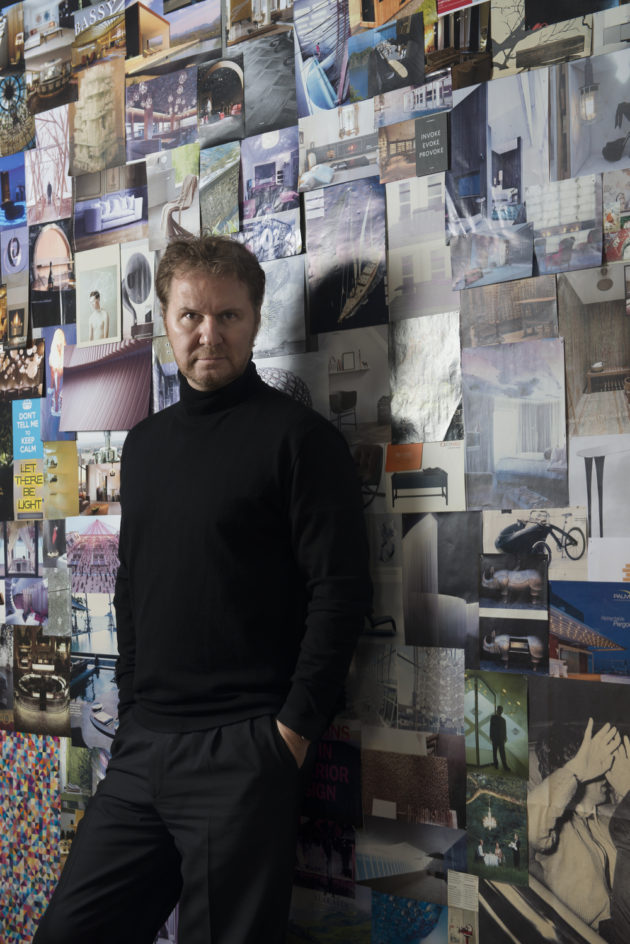
Diego Gronda
Diego Gronda is without a doubt one of the most prolific Spanish designers on the international scene today, with more than 22 years of leadership in architecture and interior design. Throughout his career, Diego has collaborated with some of the most influential forces in hospitality, such as Grand & Park Hyatt Hotels, InterContinental Hotels, Mandarin Oriental, Nobu Hospitality, Ritz-Carlton Hotel Company, Starwood Hotels & Resorts Worldwide, Taj Hotels Resorts and Palaces, and Virgin Hotels. Other noteworthy collaborations include the Rockwell Group and Tony Chi. Diego has created successful environments for hotels, resorts, spas, and restaurants, as well as developed identities for new hotel brands around the world. He has also designed offices and residential buildings, cultural and retail spaces, and master plans for new communities in Hong Kong, Doha, Dubai and Buenos Aires.
Born in Buenos Aires to parents of Italian origin, Diego studied architecture at the University of Buenos Aires. Diego also holds a Masters in Architecture from Parsons The New School of Design, where he was honoured with the AIA (American Institute of Architects) Gold Medal for Excellence in the Study of Architecture. Diego is a frequent speaker at international conferences on topics related to design, creativity, and the future of hospitality.
Diego’s spaces are not only beautiful and innovative, they are highly practical, intuitive and more than anything engaging for the end users. This formula is one of the reasons why Diego Gronda’s projects are so successful.
It is an honour for me to have had the opportunity to interview Diego, as I have been following his work for many years. So happy to have finally the opportunity to chat with him.
Iván Meade – What was your first experience with design?
Diego Gronda – I grew up in a house with an engineer as a father who used to design, and when I use the word design, I mean that my father used to do all the space planning of high rise towers. Before his death he had completed almost thirty skyscrapers, and he would always work the space planning and then would rely on architects to create the aesthetic. So in a very strange way, my first experience with design was through space planning. My father was extremely efficient, he was almost like one of those naval engineers who design boats and basically take advantage of every single inch of space. I was very inspired by my father and the way he would craft space. My first design was a house for my grandmother. I designed this house with elevations and plans when I was eight years old, so I guess design was in my veins from very early on in my life.
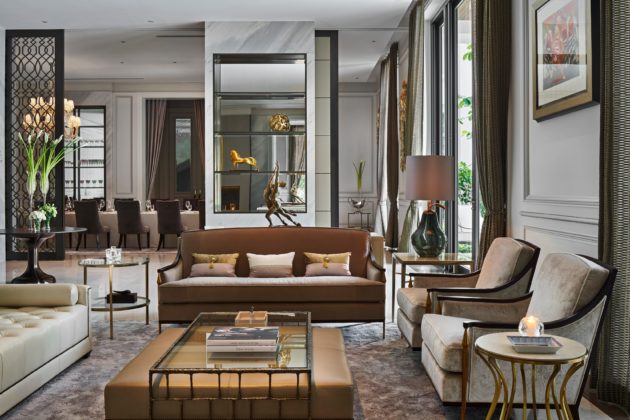
Interiors by Diego Gronda, in collaboration with the Rockwell Group
Iván Meade ‐ How and why did you get into the design Industry?
Diego Gronda – Both my older brother and my father were civil engineers, and I was pretty much headed straight to be an engineer as well. Six months before starting university my parents took me to the Metropolitan Museum in New York City, and there was an exhibit on Frank Lloyd Wright’s renderings. I was absolutely mesmerized by these drawings, and I basically pointed out to my father that that is exactly what I wanted to do with my life. My father said, well in fact that’s not engineering, that’s architecture, so what you want is to be an architect. So six months before university started, I shifted from engineering to architecture, and I haven’t stopped designing ever since.
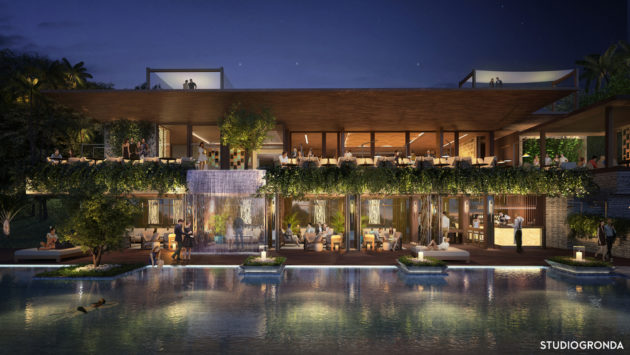
Design by Diego Gronda
Iván Meade – What is your philosophy on design and life?
Diego Gronda – Wow, this is a loaded question and very difficult to answer in a few words. If I were to try to find some kind of point in common between the way I approach design and the way I approach life, I’ve always been extremely holistic. The fact that I have two degrees in architecture, but I have also decided to pursue interior design, lighting design, and industrial design shows that I embody a holistic perspective; I really like to see the challenges various points of view bring with them. The fact that I have traveled over the past twenty-five years working on all five continents on different projects has also made me take a look at the world from various points of view, and that’s one of the things I really appreciate the most. I would like to say that my only dogma, and I consider myself non-dogmatic, is that I don’t have a dogma. I really do not appreciate people telling me what the truth is all about; I think that the truth is something that especially right now is being manipulated so much, and many times there are many truths living one on top of the other at the same time, cohabiting for lack of a better word. It really depends from which point of view you are looking at this challenge. So Feng Shui or Vastu, which is the Indian Feng Shui, are both learnings and thinkings that are based on the same quest, but they are basically created from different points of view.
I would like to believe that I’m a very open-minded person, always very eager to learn from a different perspective. For instance, I really appreciate when I’m certain of something and somebody comes by and gives me a completely different picture from what I had. And most people would consider that a problem or something not to be pleased with, but in fact I am very pleased when I am basically shown a different way of seeing things. And I do believe this ability is extremely important when it comes to design. After all there are two lines of design, those who say that everything has been designed, and others (who I identify with) who say that you can always update all designs and there are always new places for new designs because there are so many new needs and new careers and new points of view becoming visible. Things that were never paid attention to are all of a sudden being given attention right now, for example the quality of the air, the value of textures when crafting an experience, or sustainability in architecture. These are all things that maybe a couple of decades ago were only mentioned very briefly. So, I do believe that my philosophy is that of somebody with a mind looking to be surprised and trying to learn from new experiences.
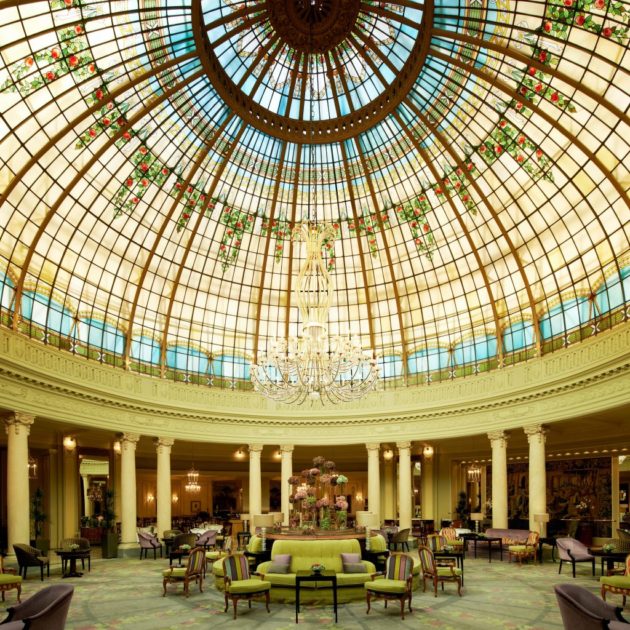
Interiors by Diego Gronda, in collaboration with the Rockwell Group
Iván Meade – What part of your job would people find most surprising?
Diego Gronda – I come from a scientific background, both from my brother and sister and father, and also from a group of friends that are very much interested in understanding how things work in the world. So, I have a very multifaceted mind that is fascinated by how things are put together, how they work, and also by things like engines, plants, mammals, sea currents, eolic, hydro, and solar energy, etcetera. So I think that a few people are surprised by that kind of general knowledge that I apply to our designs.
There are also sometimes designs that are botanical or are related to Indian culture or Thai culture or Russian culture or things that I might have learned in Africa, for example. I do believe that part of the value of working with my group is this kind of global view, and by global, I don’t mean that we are everywhere, but instead that we search our inspiration from everywhere. We believe that ideas come from the most unexpected spaces; great ideas can even come out of ugliness or mediocre environments. I think that the most important thing is how curious you are as a person, and that is the virtue I treasure the most when hiring somebody or even in the education of my kids; how curious are they, how many questions do they ask, how eager are they to learn? Because for me, curiosity is a kind of passionate effort that we enact to get an understanding of things and to learn more. And I see there’s a lack of that lately, maybe because young generations believe that the internet has an answer to everything, and the fact is that when you do have the answers to everything, in fact you don’t have any answer at all. Let’s face it, the internet gives you a hundred answers to every single question, so rather than having one answer you have a hundred answers, which basically proves useless. I do believe that now more than ever, not only search engines but common sense and trying to process the information from the internet is a major skill that’s in demand, and I don’t think that the way education has evolved is really incorporating this ability in a way that’s needed. I think that young generations still have difficulty trying to decipher the information they find online, and that is a little chaotic, because as I said before, when you have a hundred answers you have no answer whatsoever.
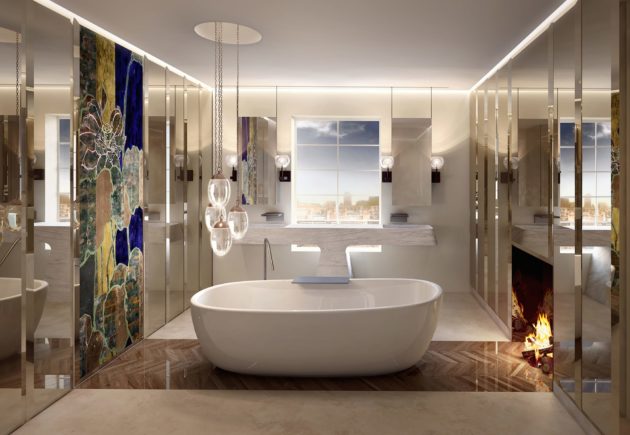
Interiors by Studio Gronda
Iván Meade – What do you do when you are feeling uninspired?
Diego Gronda – That’s an important question. Sometimes I simply go out of the office and walk around the bloc, just to clean my mind. However, inspiration has been said to be something that comes and goes almost as though you open the window and a breeze comes in and inspires you. You can think of inspiration through a muse, although I’m not so much of a muse infused designer. I have to say though, there are certain things that do turn out to be muses for me, you know, and it’s not specifically people, but sometimes a movie that I’ve seen that all of the sudden gets my creative fluids going. Movies are a great inspiration for me, books as well are a great inspiration to me, and art, art is by far the most prolific inspiration for me. Whether it’s going to an art gallery or looking at internet blogs that I follow with young artists, that’s for me one of the main sources of inspiration. In a way, art is the pulse of culture. If you read between the lines it is basically telling us in which direction we’re all heading, and right now, there are obviously multiple readings on where we are heading. Rather than spending so much time trying to decipher which one is the right direction, I’ve learned to live with all of them simultaneously, and I think this is very important. I try not to judge whether an artist is good or bad, inspiring or uninspiring, because art can be uninspiring today and could be the genesis to a great idea the following day.
So I do believe that the issue with being dogmatic is that through life we are constantly changing, especially right now in our current world. For example, it’s a little bit forced to believe that the ideas you generated when you were 30 years old should apply when you’re 35 or 40. I do believe that that mindset tends to create design icons, but I’m not so much in love with design icons that have created only one object and that’s it, but instead I appreciate those who have let their work evolve through time. I think design is a discipline where the element of time is extremely important, and therefore it is the evolution or the journey that is more important than the milestones left behind. So, inspiration is something that you can work very hard for one day and get no answers, and then the following day solve the problem in exactly five minutes. There is a certain beauty to that uncertainty. Nowadays, in our world where everything is tabulated and we know exactly how long it will take to solve A, B, or C, inspiration is still that element of unpredictability that makes design very magical.
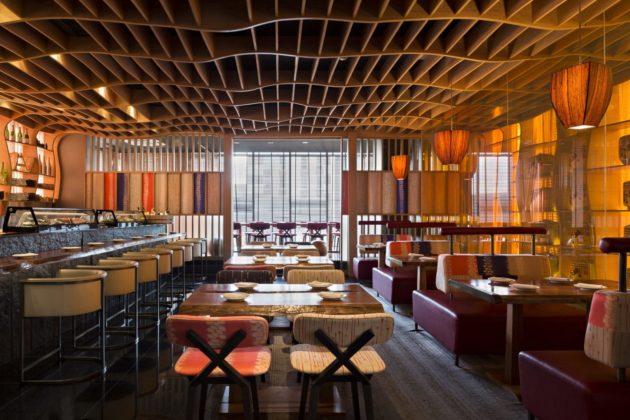
Interiors by Diego Gronda, in collaboration with the Rockwell Group
Iván Meade – What is the essential element of any room?
Diego Gronda – A user. We can talk about the light, comfort, or warmth of a room without understanding the user or the potential use of that room, but the user is the most important, and I can’t stress this enough. The user is somebody who will most probably have different points of view from you as a designer, and the minute that this thought occurs there is a dialogue. It should be the architect who is fostering that dialogue in order to create something that’s unique; it’s almost like having a child, it’s not that you’re having a kid with yourself, but instead you’re having a son or daughter with somebody else and it’s the beauty of the combination of the genes that makes it magical. The projects of which I’m the proudest are those where there has been a very good chemistry and interaction between the client and the designer. These are projects where you begin to see things that probably could not have been designed only by yourself, and so the design has become what it is through that interaction with the client.
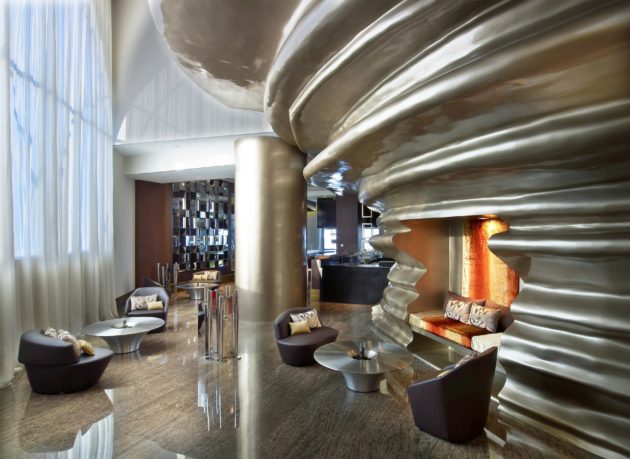
Interiors by Diego Gronda, in collaboration with the Rockwell Group
Iván Meade – What is the best advice you have ever received?
Diego Gronda – When studying architecture, I had a theory teacher called Amir Ameri who is from Iran. This amazing human being taught me a lot, but most importantly he posed this kind of question at the right time and the right place when my brain needed it the most. He said to me, “oh, so you’re one of those kinds of people who believes everything he reads.” It was a very loaded comment, and the question contained within it took me almost three months to answer. It was not a great question, but it was just the right question at that time. In short, he prompted me to question absolutely everything, and don’t believe anything that’s written.
And that for me was a point of inflection in my career of questioning absolutely everything, everything you read, everything you see, everything that the masters have taught you. Of course, I had a certain amount of knowledge and experience by that time because I was doing my Masters, so I had some artillery to react with. But I do believe that especially right now, where a young designer will immediately question you because they saw this and this on the internet, my advice is to please stop believing what you read on the internet. As I always say to my designers or my kids, I can find a true answer for absolutely every single absurd question you can imagine, and I can assure you that there is an answer for that on the internet. But once you realize that you’re going to be reading through pages and pages of information and big data that conduct you to absolutely nothing, or even worse, conduct you to the wrong place, you must question yourself, and find ways of stimulating your questioning powers. Try as hard as possible to ask the right questions, because that’s another big problem that’s occurring right now, people are simply not asking the right questions.
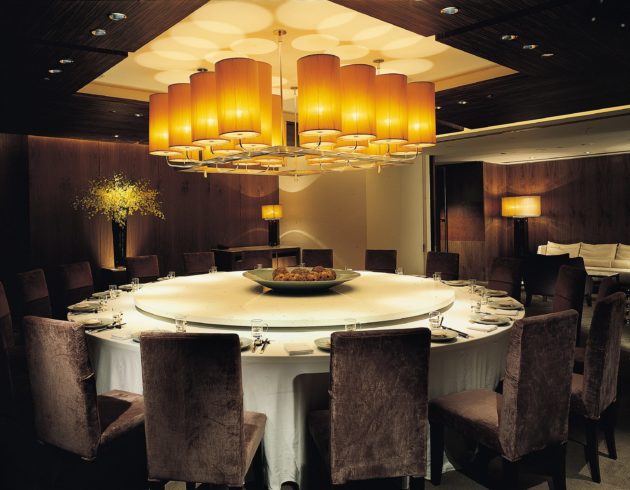
Interiors by Diego Gronda, in collaboration with Tony Chi
Iván Meade –What advice would you give to your younger self?
Diego Gronda – I think I summarized it earlier, but briefly it is question everything, learn how to ask the right questions, and find time to think. That’s one of my most precious times (thinking), and these moments are far too precious; I should be able to carve more time from my own life to just think. We live such busy lives, you know, I travel a lot, we work very hard at the office with the team, and most times you just simply don’t find the time and the silence to think. A designer after all is someone who is solving problems, spatial problems. There’s a large amount of thinking that needs to occur in order to best solve all of these problems.
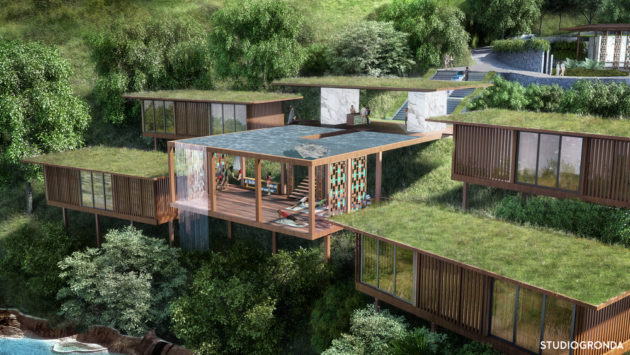
Design by Studio Gronda
Iván Meade – Many of our readers are design students ‐ What would be the best advice you can give to somebody who is starting a career in design?
Diego Gronda – Well, other than what I’ve already mentioned, I do believe that hand drawing is extremely important. It is fascinating how young designer are relying on their computers, iPads, iPhones, to basically use images to express their ideas. But when you’re using images to express your ideas, you are in a way copying a little bit, you’re creating very little dialogue in ideas. You’re showing one image and then you’re showing another image, and you’re not collaging them into one, so there’s no unique thought, you’re using somebody else’s thought. When you draw, even if you were to try to replicate a picture of a particular space, there’s no question you will edit it; you will make it bigger, smaller, shorter, darker, lighter, more abstract, more eclectic. You are putting your own position onto it. The art of drawing is something that less and less people are finding valuable, but through my traveling around the world, I’ve come to basically convince a client to do a project with me by simply drawing an idea on a napkin in a nightclub. Tell me how could you replace that with a laptop or an iPod? Don’t get me wrong, I’m sure that people will be convinced by some selection of images expressing that we can design your hotel in a certain way, but the truth of the matter is that’s very risky because you’re selling your ideas by showing somebody else’s ideas. I do believe in the power of uniqueness, so when you draw you are creating something unique, because you’re combining images that you have in your head, ideas that you have just imagined while discussing this with a client, and when you put all these things together, you create something that’s unique. I also think uniqueness is very important in design, and not just to clone existing designers.
So, other than thinking and other than questioning everything you read and you see on the internet, I think cultivating the art of drawing is extremely important. I was very lucky to study architecture the first time with fellow students who were really amazing at hand drawing. They would express their ideas in an impeccable way. I did not have that skill, but I basically applied myself to learn from them how to draw. And after six years, I have to say that I was able to get to their level, and I’ve continued to develop my own style of drawing since then. But it’s not so much about creating a drawing that is beautiful, it’s about conveying an idea with a drawing, whether it’s axonometric, a sketch, a plan, or an elevation. The most important for me are spatial drawings, and I do not believe a lot in plans and elevations; those are construction documents for lack of a better word, but the human eye will never see an elevation or a plan. We actually inhabit these spaces and you see them in three-dimensions.
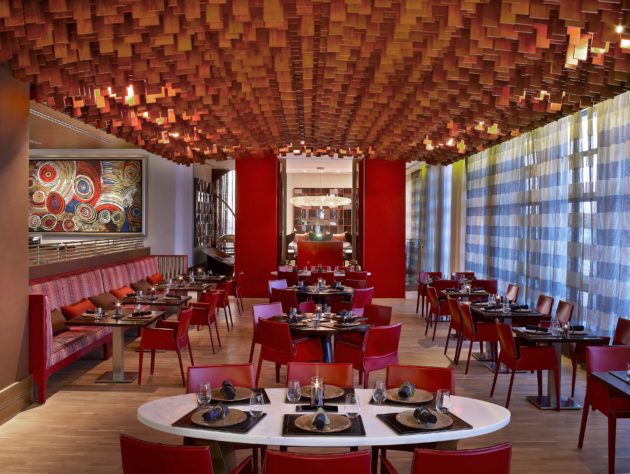
Interiors by Diego Gronda, in collaboration with the Rockwell Group
Iván Meade – You are running a multidisciplinary design studio mixing different practices like architecture, interiors, and industrial design due to the scale of your projects. As a principal designer, what is your biggest challenge and how do you resolve it?
Diego Gronda – We design experiences, guest experiences for hotels, for movie theatres, and for institutional buildings. They could be pleasant guest experiences, or they could be a hospital where you need to create a guest experience that reduces the stress of the activities happening inside that building. When you are designing an experience, architecture is not enough. You need all the tools, all the pencils and pens and colors you have; is it landscape design, is it floral design, is it fashion design, or color design: there’s so many things. The first time I started architecture I designed in a very Beaux-Arts style. But the truth is when you’re designing an experience, you need a lot more experience than two other disciplines. So if we don’t have that discipline, we’ll bring the best out of that discipline to basically collaborate with us, because at the end of the day we do believe that great design comes out of great collaborations.
So I think it’s extremely important to understand that you’re carving an experience almost like a film director is writing a script and creating a story board, that’s what we do when we’re designing an experience. So it’s the egg or the chicken. Do you design following only the capabilities you have, or do you design the perfect guest experience and then you find if you don’t have those skills in yourself or in your team, do you go and look for talent outside? I am more of the latter; I believe that the guest experience is king or queen, and you should really give the best for that particular demographic with that particular target, for that particular project. Your skills or your team’s skills cannot limit what it is that you want to create; imagination is limitless and your box of pens and colors should be infinite as well. You should be able to do anything you want. Right now we are working on defining a high-end movie theatre chain in India, which is pretty much changing the game on how movies are being experienced in India, and we are using a lot of digital information and video art. We are hiring people from abroad to basically try to convey this idea of digital video art within physical spaces, a skill that we still have not found the ideal person to have in-house, but that doesn’t stop us from saying ok, we need to have the skills from outside, let’s bring that person in, give the best design to the client in order to have the best experience for their potential guests.
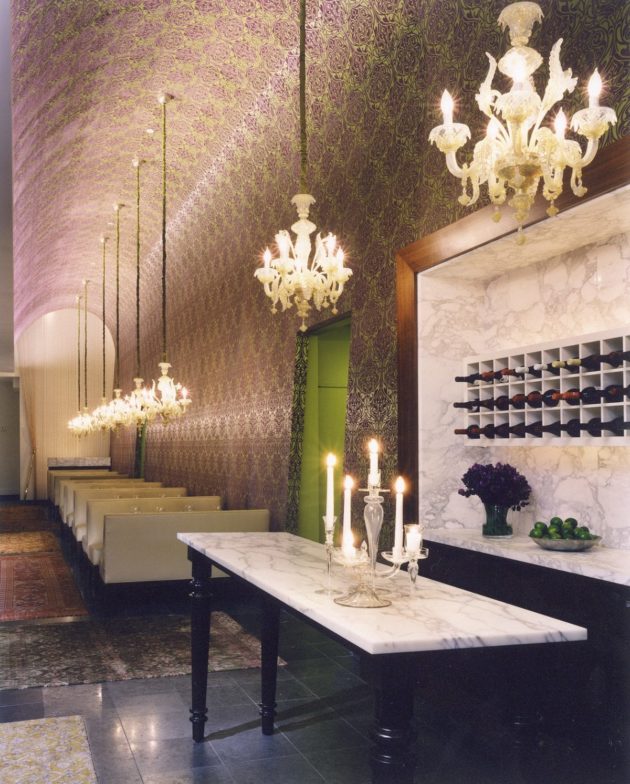
Interiors by Diego Gronda, in collaboration with the Rockwell Group
Iván Meade – What makes your approach to interior design unique?
Diego Gronda – I would extend that question to interior design, architecture, landscape design, urban design, etcetera. What makes it unique? That our solutions are unique, that we start from scratch. I think that’s kind of a no-brainer, you know. Let’s face it, most designers—especially large studios—find solutions to the perfect bar, the perfect banquet, the perfect chair, the perfect pool, the perfect landscape combination and you start designing with design blocks. They use the bar of the Four Seasons and grab the banquet that we used for the Mandarin Oriental in order to design the Continental. And, as effective and efficient as that is, I always request that the design team starts with a clean slate, a white canvass in front of them. This gives us a lot more freedom and I think is what makes us unique. The genesis of our design is our freedom, and that freedom is conditioned by the guest experience, not by the client, but the guest.
It’s not uncommon for me to have a debate with the client when they are trying to create a project where he or she are not the target demographic. This happens a lot, where we as designers try to please our clients, and then the project might not work. The truth is that you have to make a client sometimes understand that if they are a 65-year-old person with a conservative point of view, and they are trying to do a very trendy young hotel for millennials, their tastes and even my personal tastes do not apply for a young hipster or a young millennial hotel. You really need to detach yourself from everything you know or like, and basically try to live life through the eyes of your potential guests, walk the streets through their shoes, try to immerse yourself into their culture, and understand how they behave. This is not only a fascinating exercise, it is a unique exercise; very few people really are able to detach themselves from their own beliefs and from their own tastes when designing a new project. If I were to gather all the projects I’ve designed for different companies and for my own company, and look at them as a whole, they are extremely different one from the other. If I were to compare myself to a well-known designer who has a very specific design style, I am exactly the opposite. A job well done is when people cannot tell who designed the project; there is no ego in the design, and the style in a way is invisible.

Interiors by Diego Gronda, in collaboration with the Rockwell Group
Iván Meade – What is the last place you saw that made you think, I wish I’d done that?
Diego Gronda – I am not a jealous architect, so I will never wish to do somebody else’s work. I, like many other designers, will see a project that might become a muse, or a building that simply elevates you. But wishing for myself to be the designer, I think that is something I am not particularly interested in. I get inspiration as anybody else from the buildings, but I will never be able to desire to design somebody else’s project.
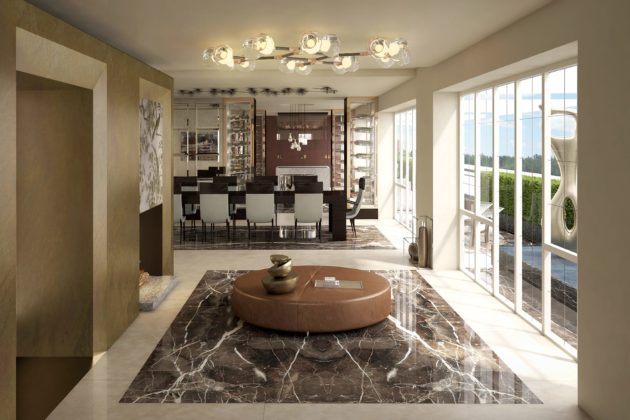
Interiors by Studio Gronda
Iván Meade – You have had projects in various locations around the world. When designing for international clients, what were some of the differences in culture or possibly climate that you had to be mindful of?
Diego Gronda – Well, I think that more than the climate, the issue is how different cultures behave, and how I might present projects to a Thai client or a Japanese client or a Chinese client, even if I had exactly the same design. The way of communicating in different cultures is very different because they have different codes, and it’s important to be respectful of those codes, to cherish them, embrace them, and to share the respect of their culture. One of the things that has made me more successful around the world is the genuine interest I show towards every single culture, and the will to understand and cherish the differences between cultures. For instance, in many Asian cultures using mirrors is something that is a big issue and that they are not comfortable with; the color black is another thing that they are not comfortable with, and that is a question of being respectful towards what they like and what they don’t like. The cultural element is important, and I do believe it is important to create a differentiation of one culture from another, and not just coming in as the designer with some kind of brilliant idea from Thailand and add a Spanish rapper and make the design Spanish-Thai style. I’m not very comfortable with this approach, although I know it’s been successful especially in fusion cuisine where you’re eating a combination of flavors that are not always telling you what it is. Now, how do I apply learnings form my trips to Imam or Dubai or my many trips to Beirut or my two projects in Europe or in the United States? That’s what fascinates me about travelling, and that’s where the richness comes in and how we think outside of the box; our playpen is much, much larger and broader, and we’re taking inspiration from so many different cultures.
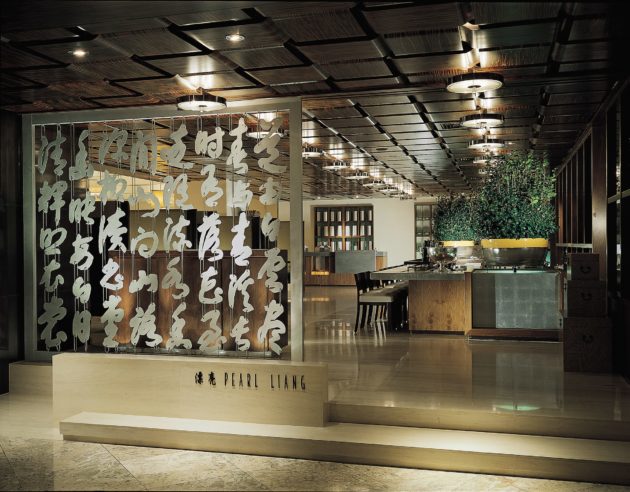
Interiors by Diego Gronda, in collaboration with Tony Chi
Iván Meade – Currently you completed the Tatel restaurant in Miami – What was the experience like?
Diego Gronda – Tatel was a fascinating experience by the mere fact that we were really trying to convey the lifestyle of Madrid. Madrid is a very lively city. Foreigners talking about Spain usually relate to Barcelona because it’s really a beautiful city with a sea next to it, but when it comes to the community itself, Madrid has a very playful, fun, and friendly community. I might say that Barcelona has a lot more serious community. So Tatel was born form a kind of playful “jaleo”, which means a kind of noise and people laughing and singing that is very common in very simple restaurants in the Madrid city. We could potentially transport or translate the design of Tatel in Madrid to Miami, but the truth is that our biggest challenge was how do we transfer the energy of Tatel. So, the design is a lot more ambitious, especially too because we’re placed in the middle of Collins avenue with a number of really important milestone restaurants who’ve been in Miami for many years. There’s so many hotels designed by signature designers with star chefs that we are now competing against, so we needed a Tatel with a much more flamboyant, much more powerful dress to perform in that arena. So we created a space that was accompanied by video art; we commissioned two pieces, one of a flamenco dancer exercising at home. The piece is just a shadow of a lady arriving home, dropping her stuff and starting to stretch and begin practicing flamenco. It was projected on a 3’ x 3’ wall on the entrance of the restaurant, and it became so successful on the opening night that many guests entered the kitchen and tried to look for this lady performing flamenco only to realize that it was a video, indeed, a very successful way of using technology.
Additionally, we used art from the past, specifically the very famous impressionist artist from Spain called Sorolla, who also lived in the United States at the beginning of the century. There are two large paintings of these ladies in white beach dresses and umbrellas and hats, and this painting represented a Spanish artists point of view of female sensuality at the turn of the century. I wanted to create a dialogue with the amazing design team that I have in the office between the past and the present; art has an enormous history in Spain, and it’s not always very well known. So to create a counter point to Sorolla and his oil and canvass, we created nine enormous screens on the ceiling of the restaurant and commissioned the second video artist to create a video of a lady swimming in the Mediterranean filmed from underwater. This lady would swim back and forth through the restaurant each night. And the question was, how would Sorolla be present in the 21st century? Obviously he would not be oil and canvass, he would probably be video art, and furthermore, what would be female sensuality, you know, from the point of view of Sorolla. And that’s how we created this kind of dialogue, one which people don’t always understand in the beginning, but when they ask, they also open up an important space. So we also explain these ideas (the dialogue in the artwork) to the staff, so that the staff is empowered to talk to the guests and to interact with them, to create an engagement with the guests that I think is also extremely important to creating a space that not only engages from a physical point of view, but also from the staff that works in that space. The staff can basically be guides, almost owners of that space. So Tatel was an amazing experience, and we have a powerful sculptural bar, the “it” bar of Miami right now, which is facing Collins Avenue.
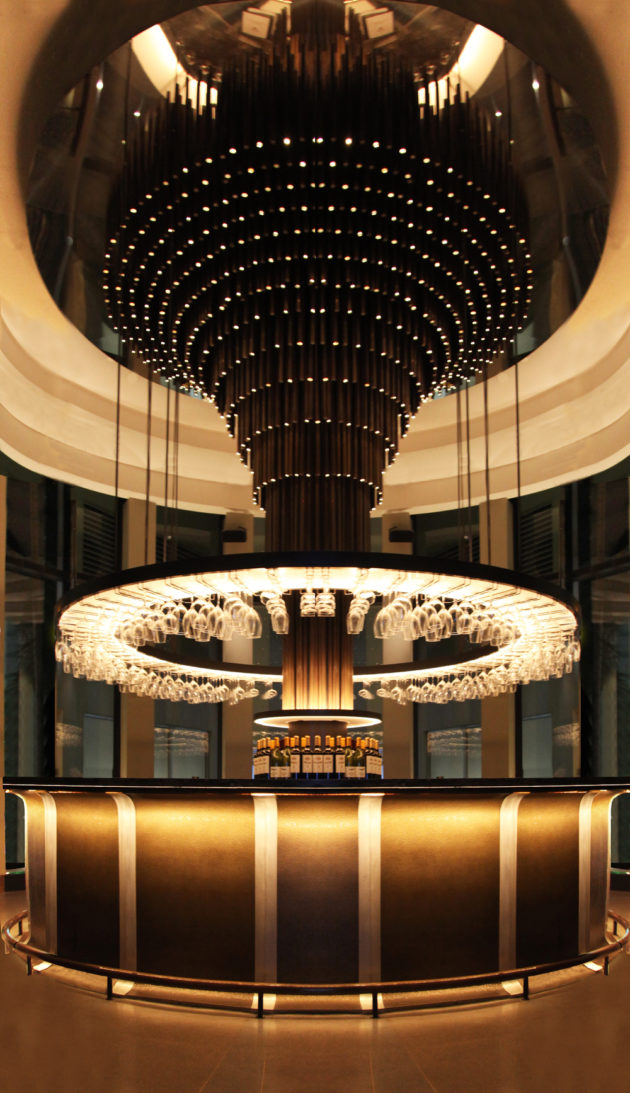
Tatel by Studio Gronda
Iván Meade – What are you working on right now that you are most excited about?
Diego Gronda – When you’re designing projects all over the world and they’re all different, each of them are exciting in a different way. We are designing a very boutique 22 villa, freestanding hotel in Pouquet, in the last virgin peninsula in the south of Pouquet. It’s very high end, and we’re doing a spa experience, only 4 treatment rooms in the middle of the woods and a restaurant and a gym and a kind of a roof deck where you’re almost floating on tree-tops. We are also, as I mentioned before, defining great movie theatre experiences in India. It is a 4200 seat theatre in Bangkok that needs to transform into a ballroom and then transform into multi-function space. The word transformation is one that I have not yet mentioned, but it is one of the key elements of our studio. Everything needs to serve two purposes; we are strong believers that transformation is the key word in the 21st century; you just can’t make a client spend a fortune on a space and expect that it’s going to be timeless, you cannot expect a client to redesign their spaces, whether it’s a hotel, a spa, a club, every two years, or even yearly; it’s impossible, it’s an equation that will never work. So we are defining spaces as the transformation as a key element, and how these will transform itself for the seasons, form the weekdays to the weekend, from the day to the night, for special festivities, etcetera. We’re doing two hotels, one in Barcelona, one in Madrid, we’re doing a residential building in London on park lane, we’re doing a beach club in Miami, we have a lot of projects throughout where transformation is key, and that will be a little bit longer of an answer, but there are lot of little details in each of them that makes them special and exciting.
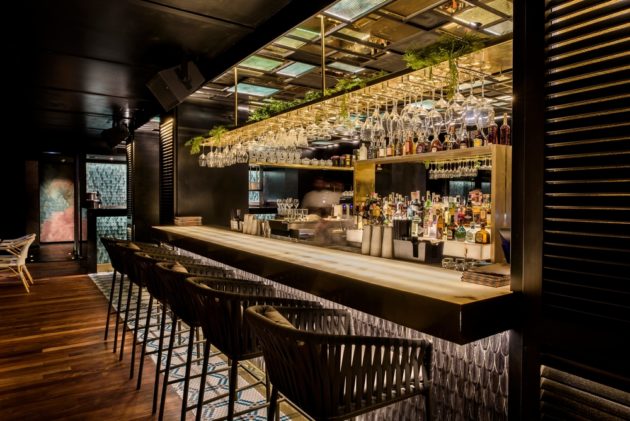
Interiors by Studio Gronda
Iván Meade – Lastly, you have already created a stunning body of work with many mediums and styles. What would you like your legacy to be?
Diego Gronda – I don’t believe people who think about their legacies actually create a legacy. A legacy is something that is almost like trying to write history; you never write history, somebody else writes history on you. So, I’ve never thought about legacy, I don’t even know if I will have legacy. I do treasure the fact that all our projects are different, I treasure the fact that we are a design studio, and therefore that means that you can see the hand of each of the designers that collaborated on the project, and I think that makes them unique. So, if I were to break my own rule and try to envision my legacy, I would like that to be of a polyvalent, polyaesthetic studio with many different brains, incorporating their own ideas into designs and make each one of them very special and unique due to that very important and essential dialogue between the designers, the guest experience, and the client.
I invite you to visit Diego Gronda’s incredible and expansive body of work at his studio website:



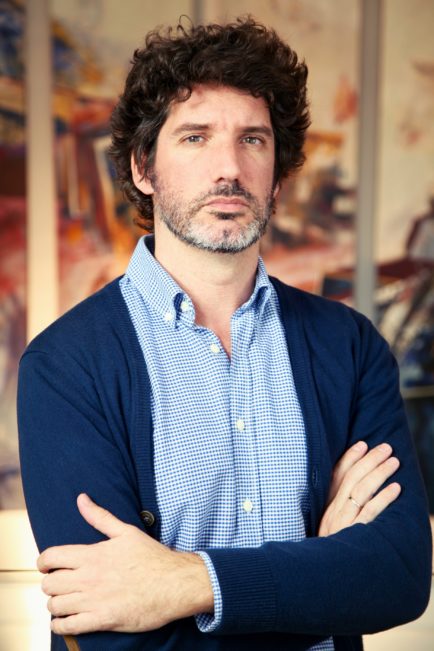
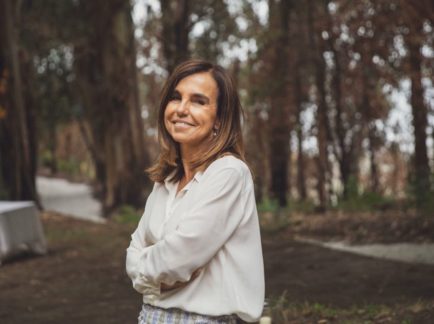
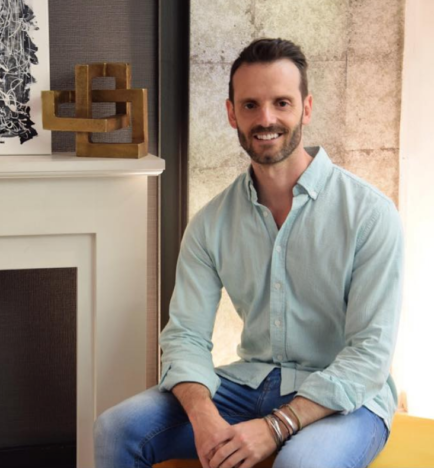
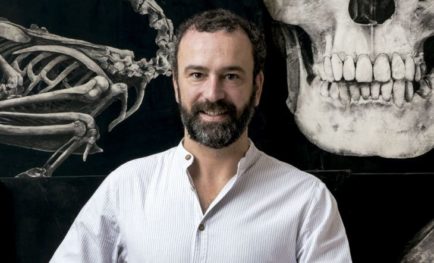
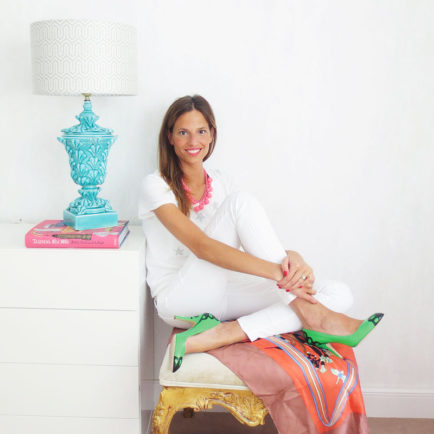

Comments